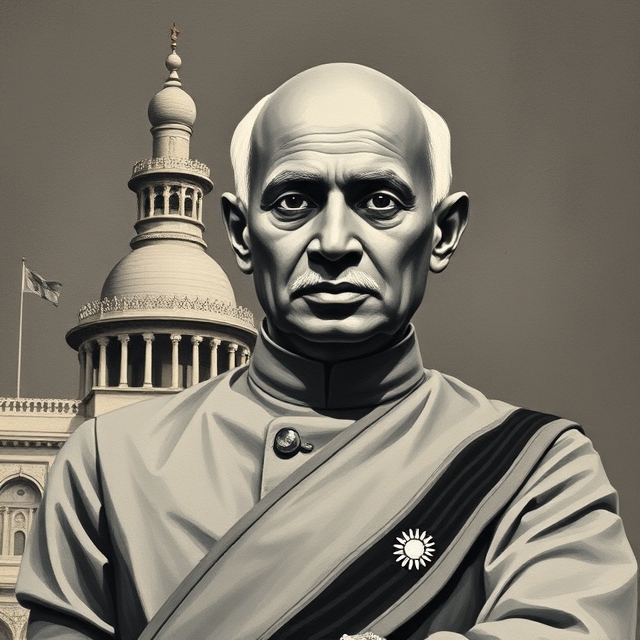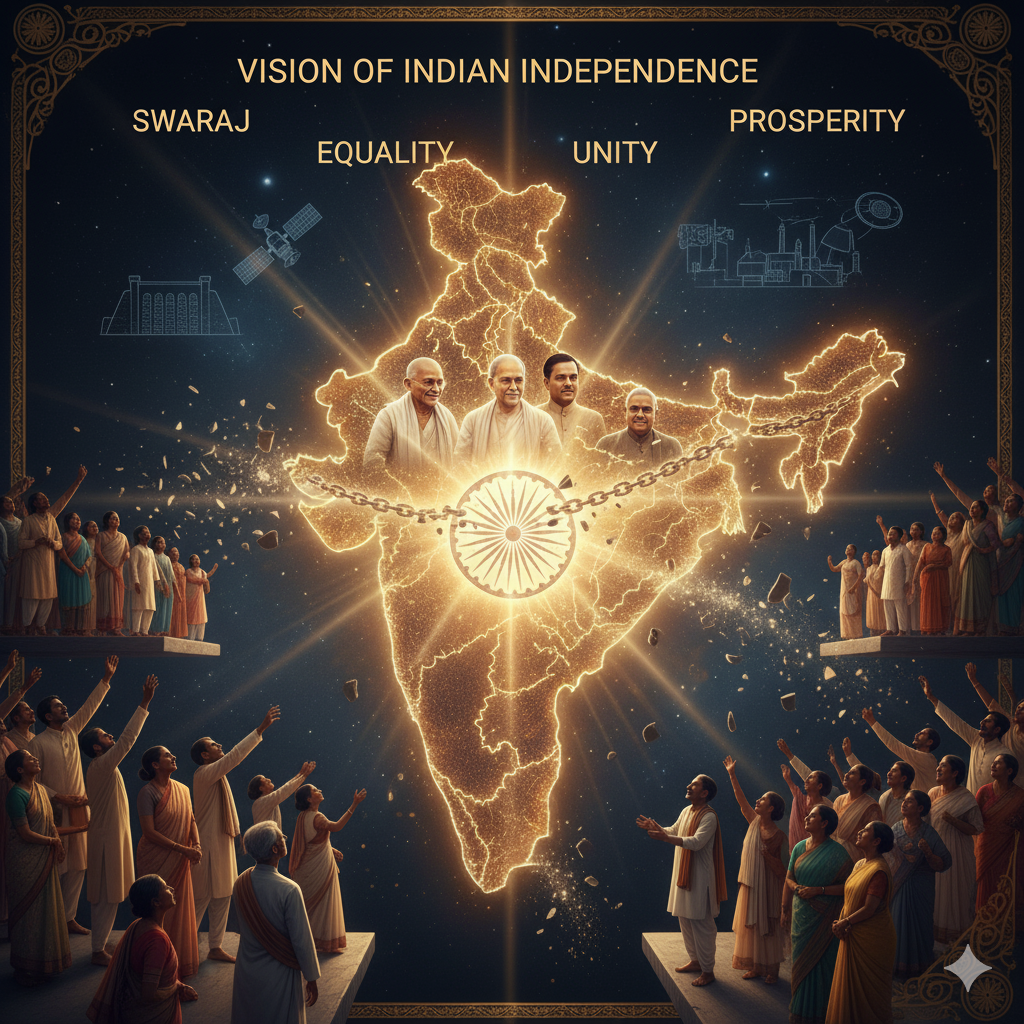Sardar Vallabhbhai Patel, often referred to as the “Iron Man of India,” played a pivotal role in the integration of India post-independence. After India gained freedom from British rule in 1947, the country faced the enormous challenge of consolidating over 560 princely states into a united and cohesive nation. Patel’s leadership, determination, and diplomatic skills were crucial in ensuring that India emerged as a unified, strong, and independent nation. His efforts in unifying India have made him a key figure in the nation’s history, and his role in the process deserves special recognition.
The Challenge of a Fragmented India
Upon independence, India inherited a fragmented political structure. British India was divided into two parts—Hindustan and Pakistan—while over 560 princely states existed as independent entities under the suzerainty of the British Crown. These princely states were not subject to the authority of the British government, but they had varying degrees of autonomy. With the departure of the British, the question arose: what would happen to these states? Would they remain independent, join India, or join Pakistan?
This posed a major challenge to the unity of India. The country’s geographical boundaries were undefined and the political landscape was fractured. The British did not leave behind a coherent plan for the political integration of India, and the fledgling Indian government had to address this issue immediately.
The Role of Sardar Patel in the Integration of India
Sardar Patel’s influence in uniting India was instrumental in overcoming the challenges that arose after independence. As the Home Minister and Deputy Prime Minister of India, Patel was tasked with the responsibility of ensuring the integration of these princely states. His understanding of the complexities of Indian politics, his leadership skills, and his unwavering determination made him the ideal person to take charge of this task.
1. The Appointment as Minister of Home Affairs
When the Indian National Congress assumed power in 1947, Patel was appointed as the first Minister of Home Affairs. This role was crucial for the consolidation of India, as it involved dealing with internal security, law and order, and the political integration of the princely states. Patel’s first task was to formulate a strategy that would ensure that these states would join the Indian Union.
2. The Role of Lord Mountbatten
When Lord Louis Mountbatten was appointed the last Viceroy of India in 1947, his role was to oversee the transition of power. His recommendation was to leave the decision of joining India or Pakistan to the rulers of the princely states. Mountbatten felt that this would prevent any forceful annexations and provide each state the freedom to decide its future.
However, Patel disagreed with this approach. He believed that leaving the decision to the rulers of these states could lead to fragmentation, chaos, and the possibility of foreign intervention. Patel was committed to preserving the unity of India, and he was determined to ensure that these states joined India without exception.
3. The Instrument of Accession
Sardar Patel and his trusted aide, V.P. Menon, played an instrumental role in negotiating the terms under which the princely states would join India. The Instrument of Accession was a legal document that allowed the rulers of the princely states to join India. It gave the Indian government control over defense, foreign affairs, finance, and communication, while leaving other matters such as internal administration to the princely rulers. The process was voluntary but was framed in such a way that the states could not remain independent or join Pakistan.
Patel’s skillful diplomacy and his firm stance were instrumental in getting the rulers to sign the Instrument of Accession. He engaged with the rulers personally and convinced them that joining India was in their best interest. His strong political acumen, paired with the moral authority he commanded, ensured that most of the princely states acceded to India.
4. The Integration of Major Princely States
Several princely states were hesitant to join India, and their integration was a complex process. Some of the key princely states that required intervention included Jammu and Kashmir, Hyderabad, and Junagadh.
- Jammu and Kashmir: The princely state of Jammu and Kashmir, ruled by Maharaja Hari Singh, was a particularly contentious issue. The state was strategically located and had a majority Muslim population, making it a valuable prize for Pakistan. Initially, the Maharaja was reluctant to join India, but after tribal raids supported by Pakistan, he sought India’s help. On October 26, 1947, the Maharaja signed the Instrument of Accession, allowing India to send troops to defend the state. The integration of Jammu and Kashmir became a long-standing issue, but Patel’s actions were crucial in keeping the state within the Indian Union.
- Hyderabad: Hyderabad, ruled by the Nizam, was another state that initially sought to remain independent. The Nizam was unwilling to join India, which posed a serious threat to national unity. In September 1948, after months of negotiation and mounting tension, Patel ordered “Operation Polo”—a military operation to integrate Hyderabad into India. The Nizam surrendered without much resistance, and Hyderabad became a part of India.
- Junagadh: Junagadh, a small princely state located in Gujarat, was ruled by a Muslim prince, the Nawab, who wanted to join Pakistan. However, the majority of the population was Hindu, and they wanted to join India. Patel effectively handled this situation by mobilizing public opinion and using political pressure to persuade the Nawab to flee to Pakistan. Junagadh was incorporated into India after a plebiscite, and its accession was accepted.
5. The Role of Patel’s Leadership and Vision
Patel’s success in unifying India can be attributed to his leadership and vision. He understood the importance of not only integrating the states politically but also ensuring their social, economic, and cultural integration. His leadership was based on pragmatism, diplomacy, and firmness, rather than on any idealistic notions of unity. Patel’s approach to integration was clear and practical—he focused on what was necessary to safeguard the unity of India, even if it meant using force in certain situations.
Patel also recognized that the integration of the princely states was not merely a political act but also a social and cultural one. He worked towards fostering a sense of national unity by promoting the idea of a single Indian identity. His efforts were not just about the physical incorporation of territories; he also focused on ensuring that the diverse cultures, languages, and religions of India would be preserved under the umbrella of a unified nation.
6. Patel’s Legacy
Sardar Vallabhbhai Patel’s role in the unification of India has left an indelible mark on the country’s history. His diplomatic acumen, firmness, and leadership were instrumental in overcoming one of the most significant challenges faced by the newly independent nation. Patel’s ability to balance diplomacy with force, his steadfast commitment to national unity, and his vision of a unified India helped steer the country through a difficult and volatile period.
In recognition of his contributions, the Indian government erected the Statue of Unity, the world’s tallest statue, in his honor. The statue stands as a symbol of Patel’s tireless efforts in making India a unified nation.
Conclusion
Sardar Vallabhbhai Patel’s role in the unification of India after independence was unparalleled. Through his leadership, determination, and diplomacy, he succeeded in integrating the princely states into the Indian Union, laying the foundation for a strong and united India. Patel’s legacy continues to inspire generations of Indians, and his contributions to the nation’s unification will always be remembered as one of the most important achievements in India’s history.




